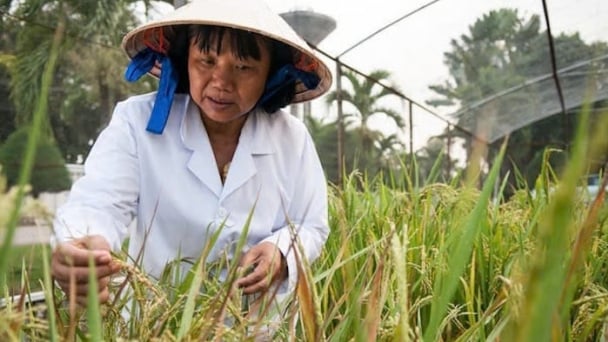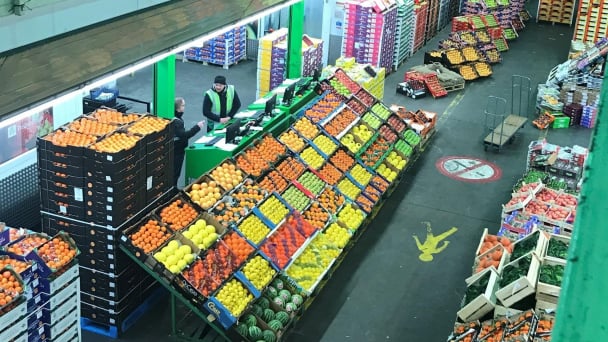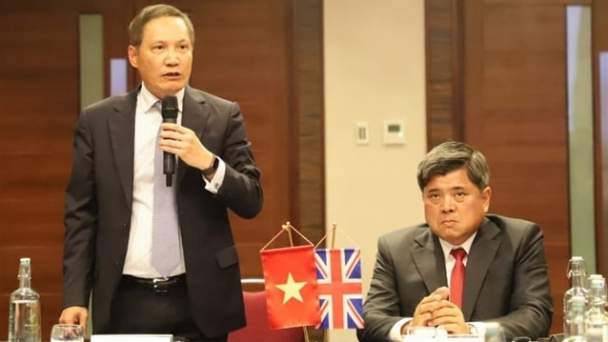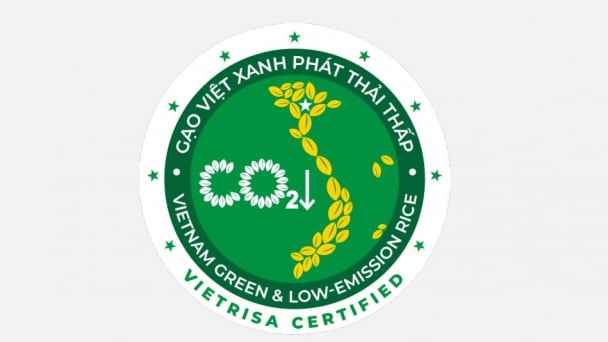May 16, 2025 | 05:12 GMT +7
May 16, 2025 | 05:12 GMT +7
Hotline: 0913.378.918
May 16, 2025 | 05:12 GMT +7
Hotline: 0913.378.918
According to the White House announcement on April 2, 2025, regarding the global reciprocal tariff policy, President Donald Trump signed an executive order imposing tariffs on imported goods from trade partners. This policy is part of a broader trade strategy aimed at protecting US domestic manufacturing and reducing the trade deficit.

The Vietnamese wood industry faced difficulties after the US announced its new tariff policy. Photo: Illustration.
According to the USTR’s "2025 National Trade Estimate Report on Foreign Trade Barriers" (March 31, 2025), which lists trade barriers and tariff policies applied to Vietnam; the DOC’s "Notice of imposition of reciprocal tariffs on Vietnamese timber products" (April 3, 2025), and the initiation of Section 232 investigations; imported wood and wood products from Vietnam are subject to basic tariff scenarios with two main groups:
Group 1: Raw timber and semi-processed wood products (the basic tariff of 10% may be applied starting April 9, 2025; or a maximum of 46% depending on the HS code to be announced by the U.S.). HS codes (Harmonized System) from 4401 to 4413. Detailed list:
Fuelwood (HS 4401): Wood chips, wood pellets, sawdust, charcoal.
Roundwood (HS 4403): Unprocessed timber (logs).
Sawnwood (HS 4407): Timber cut into boards, planks, or thin sheets.
Wood panels (HS 4410-4413): Particle board, fiberboard, plywood, veneer.
According to the DOC’s notice on April 3, 2025, “Notice of Imposition of Countervailing Tariffs on Vietnamese Timber Products,” the 46% tariff will be immediately applied to limit the import of cheap wood from Vietnam, which competes with the U.S. domestic timber industry.
For raw timber (HS 4401-4413), if the maximum tariff of 46% is imposed, the export costs to the US will increase by about USD 184 million per year (according to the evaluation by the Department of Forestry and Forest Rangers), which will reduce the competitiveness of Vietnam’s plywood compared to most other countries, such as Malaysia (maximum tariff of 24%), Thailand (maximum tariff of 37%), and Indonesia (maximum tariff of 32%).
Group 2: Processed wood products with HS codes from 4414 to 4421 and furniture under Chapter 94, with countervailing tariff rates not yet determined (pending national security investigation). This tariff rate will depend on the results of the Section 232 investigation, which is expected to be completed by December 2025 (270 days from April 2, 2025). However, they may also be subject to the basic tariff of 10% starting April 9, 2025. Detailed list:
Furniture (Chapter 94): Tables, chairs, beds, cabinets, wooden shelves (for home, office, and outdoor use).
Wood products for construction (HS 4418): Wooden doors, window frames, wooden flooring, wall/ceiling panels.
Other wood products (HS 4414-4421): Picture frames, wooden boxes, wooden handicrafts.
The Section 232 investigation of the Trade Expansion Act of 1962 allows the President to impose tariffs if the DOC concludes that imports threaten national security. The DOC initiated a Section 232 investigation on April 2, 2025, regarding processed wood products. The USTR is expected to hold a public hearing on April 15, 2025, to gather input from stakeholders (announcement expected in the Federal Register on April 5, 2025).
The results of the investigation will be announced before December 28, 2025; after which the Trump administration will decide on the final tariff rates (according to the USTR report from March 31, 2025, if it is determined that processed wood imports threaten national security, the expected tariff rate will be 46% or higher, and will be applied starting in 2026).
Processed wood products (HS 4414-4421, and Chapter 94) had an export value of over USD 4 billion in the first three months of 2025, representing a significant share of the export value to the US, and this could decrease substantially.
The reciprocal tariff imposition declared by President Trump is not just an economic decision or a balanced trade remedy; it is also a driving solution toward achieving the political resolve to "Make America Great Again."

Vietnamese wood businesses are continuing to monitor the situation while awaiting the final tariff decision, proactively and resiliently adapting with flexibility. Photo: Illustration.
Through the economic science's lens, this policy appears to change as unpredictably as it was announced, depending largely on the negotiations with trade partners and the will of the Trump administration. With Vietnam’s decades of experience in international market integration, I believe the country has favorable conditions to cope with the US tariff policy through a principled win-win cooperation approach. This is reflected in several key points:
First, Vietnam must actively engage in tariff negotiations with the US through a combination of proactive economic and diplomatic actions. The country should convey a clear message of policy flexibility, strategic vision, and long-term cooperation, aiming to resolve disagreements as a US partner. At the same time, Vietnam might consider certain agreements and adjustments to increase imports from the US and improve investment and trade mechanisms toward a more balanced trade relationship.
Moreover, according to the USTR report dated March 31, 2025, Vietnam is advised to improve its Timber Legality Assurance System to address concerns about the potential entry of illegal timber, especially from neighboring countries into Vietnam, and its subsequent re-export to the U.S.
Second, enterprises must be proactive and resilient in adapting to unpredictable developments.
Businesses are closely monitoring the situation while awaiting the final tariff decision. In the meantime, they are demonstrating proactive, self-reliant, and flexible adaptation. Currently, even foreign-invested enterprises (FDIs) have not discussed relocating operations out of Vietnam. Exporters of high-value goods should directly or through industry associations advocate for exemptions, strengthen information sharing, and work with partners and clients to consult and lobby for policy adjustments.
Most Vietnamese wood products exported to the U.S. are not manufactured domestically in the US Additionally, given the labor-intensive nature of the industry, it is unlikely that wood manufacturing will be revitalized in the US. Thus, the US will continue to import wood and wood products. Vietnamese businesses will continue implementing measures to reduce supply chain costs and maintain their competitive edge over other exporting countries.
Third, Vietnam already has a business ecosystem with infrastructure and supply chain management practices approaching international standards. The wood industry employs skilled professionals and benefits from Vietnam’s participation in several next-generation free trade agreements (FTAs). This provides room to pivot toward alternative markets such as Japan, Canada, Australia, the Middle East, and ASEAN countries, markets with low or zero tariffs.
Fourth, there should be a stronger push to tap into Vietnam’s domestic consumer market of over 100 million people. With rapid development in infrastructure and services, domestic demand for wood products is increasing, not only in quantity but also in quality. As a result, the value of wood products is rising and now represents a significant share of the sector’s market structure. It is essential to introduce mechanisms that encourage the “Vietnamese people use Vietnamese goods” movement.
Translated by Kieu Chi

(VAN) Veterinary training should focus on quality, not just quantity. Veterinarians also need more options to pursue specialized training.

(VAN) The veterinary industry needs to be viewed objectively and further invested in to properly demonstrate its role and importance in the new context.

(VAN) The number of veterinarians graduating each year is not enough to meet actual needs, hence a difficult problem for the growing livestock industry.

(VAN) The strategic partnership between Cambodia, the Philippines, Vietnam, and CGIAR ensures that innovative solutions effectively address national priorities for food system development.

(VAN) This was affirmed by the UK Minister of State at the Department for Environment, Food and Rural Affairs during a working session with Deputy Minister Tran Thanh Nam on May 13.

(VAN) On May 13, the Ministry of Agriculture and Environment, in coordination with the Embassy of Vietnam in the United Kingdom, organized a seminar titled 'Connecting trade in Vietnam-UK agricultural, forestry, and fishery products'.

(VAN) The launch of the Vietnam green and low-emission rice brand is a positive signal for both businesses and farmers, marking readiness to reach new heights in the global market.